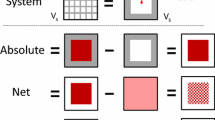Abstract
This paper discusses theoretical models for the composition dependence of equations of state and compares the quality of predictions against experimental thermodynamic property data. The mean density approximation (MDA) and the van der Waals one-fluid (VDW1) model are compared with hybrid mixing rules (HMR), in which rigorous composition dependence is used for the second and third virial coefficients and the conformai solution model is used for equation-of-state density terms beyond the third virial term. It is found that when values of unity are used for all binary and three-body unlike interaction parameters, calculated densities for methane-normal heptane mixtures have average absolute deviations of 3.54% for MDA, 4.04% for VDW1, and 2.59% for HMR. When vapor-liquid equilibrium calculations were performed for the methane-normal heptane system, average absolute deviations of calculatedK values from experimental values were 16.7% for methane and 36.4% for normal heptane using HMR, whereas when conformal solution model (CSM) mixing rules were used, the results were 34.8% for methane and 66.7% for normal heptane. When the binary interaction parameter for the characterization of interaction energies is determined, it is found to be less sensitive to state conditions in the case of HMR than either MDA or VDW1. These preliminary results suggest the potential of mixture equation-of-state methods which utilize rigorous composition dependence for the lower-order virial coefficients.
Similar content being viewed by others
References
M. L. Huber and J. F. Ely,Fluid Phase Equil. 37:105 (1987).
L. Chen, J. F. Ely, and G. A. Mansoori,Fluid Phase Equil. 37:1 (1987).
M. H. Li, F. T. H. Chung, C.-K. So, L. L. Lee, and K. E. Starling,ACS Symp. Ser. Eq. Stale Theor. Appl. 300(12):250 (1986).
M. A. Khan, M. H. Li, L. L. Lee, and K. E. Starling,Fluid Phase Equil. 37:141 (1987).
G. M. Mansoori and T. W. Leland,J. Chem. Soc. Faraday Trans. II 68:320 (1972).
M. R. Brulé, C. T. Lin, L. L. Lee, and K. E. Starling,AIChE J. 28:616 (1982).
T. W. Leland, J. S. Rowlinson, and G. A. Sather,Trans. Faraday Soc. 64:1447 (1968).
T. J. Lee, L. L. Lee, and K. E. Starling,Equations of State in Engineering and Research, 125 Advances in Chemistry Series (American Chemical Society, 1979).
H. H. Reamer, B. H. Sage, and W. H. Lacey,Ind. Eng. Chem. Chem. Eng. Data Ser. 1(1):29 (1956).
Author information
Authors and Affiliations
Rights and permissions
About this article
Cite this article
Khan, M.A., Mannan, M., Lee, L.L. et al. Mixture equations of state: Composition dependence. Int J Thermophys 11, 373–380 (1990). https://doi.org/10.1007/BF01133568
Issue Date:
DOI: https://doi.org/10.1007/BF01133568




